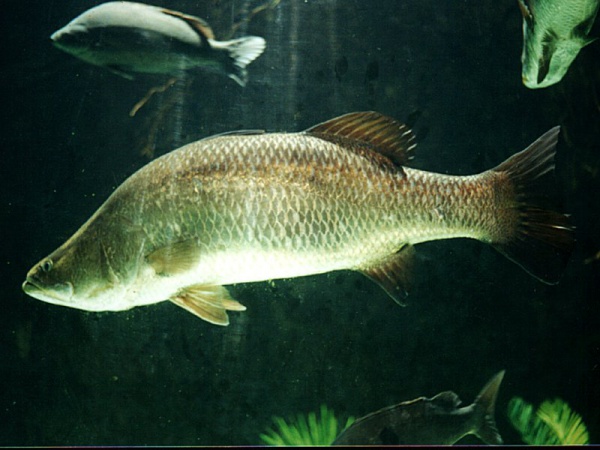Facts About Barramundi
The barramundi, also known as the Asian sea bass, is a remarkable fish that thrives in both saltwater and freshwater environments. It belongs to the family Latidae and the order Perciformes. You can find barramundi throughout the Indo-West Pacific region, spanning from South Asia to Papua New Guinea and Northern Australia. The name "barramundi" is derived from an Australian Aboriginal language, meaning "large-scaled river fish."
These fish have an elongated body with prominent, large scales and a somewhat compressed shape. They can reach impressive sizes, growing up to 1.8 meters (approximately 6 feet) in length and weighing around 60 kilograms (about 132 pounds).
Barramundi excel in various habitats, including coastal waters, estuaries, lagoons, and rivers, typically preferring temperatures between 26−30°C (79−86°F). They usually stay near the bottom of these waters and do not migrate extensively, resulting in distinct populations in different regions, such as Northern Australia. Their diet includes crustaceans, mollusks, smaller fish, and zooplankton. These fish can live in both fresh and saltwater, migrating to estuaries and tidal flats to spawn.
Anglers prize barramundi for their spirited fight, making them a popular choice for recreational fishing. They are also stocked in freshwater reservoirs for catch-and-release fishing. Commercially, barramundi are fished globally and farmed in several countries. In aquariums, young barramundi are favored for their lively behavior, though they require large tanks due to their rapid growth.
Barramundi is also a culinary favorite, known for its mild flavor and white, flaky flesh. It is a staple in various cuisines, including Australian, Bengali, Goan, and Thai, and can be prepared in numerous delicious ways. The high demand for this tasty fish has placed economic pressure on Australian producers, as much of the barramundi consumed there is actually imported. In the U.S., barramundi is gaining popularity, and it has even earned sustainability certifications from programs like Seafood Watch.
